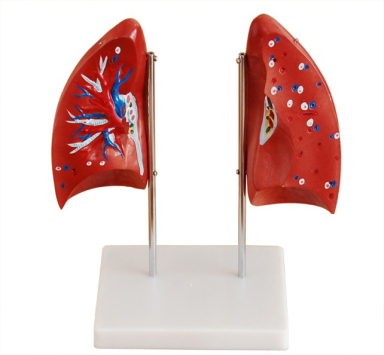In the vast field of medicine, lung anatomical model is not only a helpful assistant in medical education, but also an indispensable reference in clinical practice. This model, with its highly simulated lung structure and fine details, provides doctors with an intuitive, three-dimensional learning and research tool that profoundly affects every link of clinical diagnosis and treatment.
First, it provides doctors with a deep insight into the structure of the lungs. Through the model, doctors can clearly see the distribution and connection of key structures such as lung lobes, bronchus, and alveoli, and understand the exchange process of gas in the lungs and the overall operating mechanism of the respiratory system. This intuitive understanding helps doctors to judge the condition more accurately in clinical practice and formulate scientific and reasonable treatment plans.

Secondly, it plays a key role in surgical simulation and planning. Before complex lung surgery, doctors can use the model to conduct repeated practice and simulation operations, familiarize themselves with the surgical path, assess the surgical risks, and formulate the optimal surgical plan. This model-based surgical planning not only improves the success rate of surgery, but also reduces patient pain and postoperative complications.
In addition, strong support was provided for medical research and education. In the field of scientific research, researchers can use the model to simulate lung diseases, explore the pathogenesis of diseases, evaluate the therapeutic effect, and provide theoretical basis for the development of new drugs and disease treatment. In medical education, the model serves as an intuitive teaching aid to help students better understand and master lung anatomy and function, laying a solid foundation for their future clinical practice.
To sum up, pulmonary anatomical models play a crucial role in clinical practice. It is not only a helpful aid for doctors to learn lung structure and plan surgical programs, but also an important reference for medical research and education. With the continuous progress of medical technology and the increasing clinical demand, lung anatomical model will play a more extensive and far-reaching influence in the future medical practice. Therefore, we should fully understand and make use of this important tool to contribute more wisdom and strength to improve the quality of medical services and the quality of life of patients.
